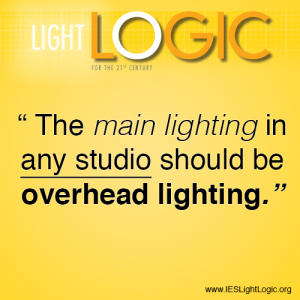Creative Lighting
 Lighting for your art studio is absolutely key, particularly for painters and photographers. While natural light is often the most pleasant, relying on this constantly changing light can make getting consistent results impossible, and so it is better to turn to specialized artists’ lights. A well-lighted studio can help you to create your best work and gain you a ‘glowing’ reception in the art world.
Lighting for your art studio is absolutely key, particularly for painters and photographers. While natural light is often the most pleasant, relying on this constantly changing light can make getting consistent results impossible, and so it is better to turn to specialized artists’ lights. A well-lighted studio can help you to create your best work and gain you a ‘glowing’ reception in the art world.
Opt For Overhead Lighting
The main lighting in any art studio should be overhead lighting, whether that be track lighting, recessed lighting, or overhead fixtures. Overhead lighting will give you the most evenly distributed light, casting your supplies, models, and canvas in the same glow. While it might be tempting to choose task lighting, particularly for your canvases, this will result in different lighting profiles between your supplies, models, and canvas. Good overhead lighting will prevent eyestrain just as well, while keeping things consistent.
Choosing the Right Bulb
Before choosing fixtures select the most appropriate light source. Incandescent light sources my not be the best solution because these bulbs give off a yellow light that may distort colors. Halogen bulbs are an acceptable option, but they produce heat that may be detrimental to the artwork and are relatively expensive. The best light option for an artist studio is often fluorescent. These sources are very efficient, while also giving off relatively high quality light, but there are yet more features to pay attention to.
Measuring Color Temperature
After choosing a type of lightsource, there are still a number of technical factors that figure into selecting lighting for an artist’s studio, including color temperatures and color rendering indexes. Color temperature is measured in Kelvin and is a comparative measure that describes the color of a light compared to a black body radiator at a given temperature. While 6500K is considered to be the purest white light, many artists paint with bulbs closer to 5000K, which is less “blue” or cool. This is closer to the color bulb most galleries use.
What’s A Color Rendering Index?
Another critical factor to consider is the color rendering index of a bulb. This measure describes how well object colors are rendered compared to their color appearance under a reference source. Color rendering indexes run from 0 to 100, and a high number indicates less alteration in the color. Most artists prefer a bulb with a color rendering index somewhere between 80 and 100. By bringing together a bulb that hits all of the right measures, you can ensure that the colors in your art are as true and vibrant as possible.